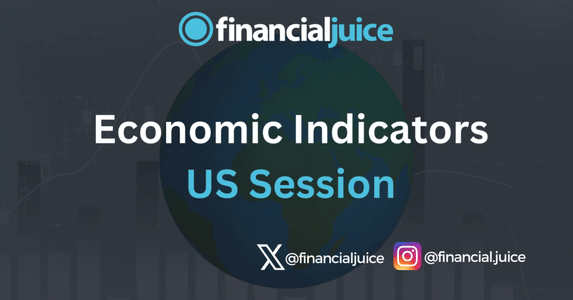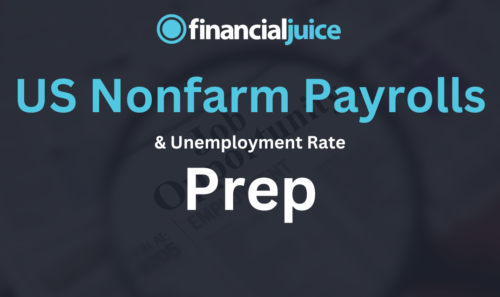
Week Ahead: Economic Indicators (US)
Monday 23rd September
09:45 ET
US S&P Manufacturing & Services PMI
The US S&P Manufacturing & Services PMI are monthly economic indicators compiled by S&P Global that measure the activity levels in the manufacturing and services sectors, respectively.
As diffusion indices, a reading above 50 indicates expansion, while below 50 signals contraction.
US S&P Manufacturing PMI: Assesses the performance of the manufacturing sector by surveying purchasing managers about new orders, production, employment, supplier delivery times, and inventory levels.
US S&P Services PMI: Evaluates the services sector by surveying purchasing managers on factors like new business, employment, input prices, and business expectations.
What to Expect
With the broader economy in focus as opposed to the path of monetary policy, the markets are going to be looking for signals on employment and demand for goods and services in this report.
Higher than expected PMIs would increase the chances for a soft landing, especially if the employment breakdown in the report is positive, as this indicates there is still enough demand to feed into corporate profits and overall US growth, which would be likely to cause strength in US stocks and the dollar.
The opposite is likely true if it were to come in lower than expected.
Tuesday 24th September
10:00 ET
US CB Consumer Confidence
The US CB Consumer Confidence Index is a monthly economic indicator published by The Conference Board.
It measures the confidence of American consumers in the economy based on their perceptions of current economic conditions and their expectations for the future.
This index is derived from a survey that assesses consumers’ attitudes about business conditions, employment, and income.
Higher confidence levels indicate optimism about the economy, which can lead to increased consumer spending and economic growth, while lower levels suggest pessimism and potential reductions in spending.
What to Expect
At this stage in the economic cycle, It is not common for the consumer confidence report to produce a market reaction without a large deviation from the forecast.
If consumer confidence is higher than expected, that would likely lead to strength across US assets (the dollar, bond yields, and stocks), as it will help alleviate fears of a recession, as it shows resilience in the consumer.
If it comes in lower than expected, this could create warning signs for a recession, which would be likely to cause weakness across US assets.
Having said that, the conference board also release the survey results on 1-year ahead inflation expectations, which the market may take note of when trying to determine inflation’s position on the path back to the 2% target.
If higher, we could see some weakness in US stocks and strength in the dollar, and the opposite could be true if it comes in lower.
Wednesday 25th September
10:00 ET
US New Home Sales
US New Home Sales is a monthly economic indicator released by the Census Bureau and the Department of Housing and Urban Development (HUD).
It measures the number of newly constructed single-family homes that were sold during the month.
This data provides insights into the demand for new housing and the overall health of the housing market.
Rising new home sales indicate strong consumer confidence and economic growth, while a decline may signal a slowdown in the housing market or broader economic concerns.
What to Expect
Housing data has not historically gotten meaningful reactions since the Fed’s tightening cycle began, but with the easing beginning with interest rate cuts last week, data that can point to growth and underline broader economic activity, like housing, may be more in focus.
That being the case, if existing home sales comes in higher than expected, you could see some strengthening in US stocks and the dollar, and the opposite could be true if it were to come in lower than expected.
10:30 ET
EIA Crude Oil Inventories
The US Weekly EIA Crude Oil Inventories report, released by the Energy Information Administration every Wednesday, provides data on the amount of crude oil stored in the United States.
This report helps to assess the balance between supply and demand in the oil market.
What to Expect
An increase in inventories suggests a surplus, which can lead to lower oil prices, while a decrease indicates a deficit, potentially driving prices up.
Thursday 26th September
08:30 ET
Weekly Initial Jobless Claims
Initial Jobless Claims measure the number of people filing for unemployment benefits for the first time in a given week. This provides an early indication of the health of the labor market and can signal changes in economic conditions.
Continued Jobless Claims represent the number of people who continue to receive unemployment benefits after their initial claim, reflecting longer-term unemployment trends.
A rising number of claims may indicate a weakening labor market, while a decline suggests improving conditions. These metrics are important for assessing the overall state of the economy and guiding monetary policy decisions.
What to Expect
With employment in focus at the moment, this report has been garnering a lot of market attention over the last 5 weeks.
A higher jobless claims number, indicating higher unemployment, would be likely to cause weakness across the US assets (dollar, stocks, and yields), as it feeds into the narrative of a hard landing/broader economic slowdown for the US economy as we come out of the tightening cycle.
A lower jobless claims number, indicating lower unemployment, would be likely to cause strength across the US assets, as it reassures the markets that the US economy may be able to exit the tightening cycle and enter the easing cycle without a recession/broader economic slowdown.
US Durable Goods
The US Durable Goods Orders Preliminary Report provides early estimates of orders for long-lasting manufactured goods, such as machinery, appliances, and transportation equipment.
This data is an indicator of business investment and consumer confidence, as durable goods purchases typically require a significant capital outlay and reflect long-term economic expectations.
Higher-than-expected orders suggest potential economic growth and increased business activity, while lower-than-expected orders may indicate a slowdown in manufacturing and overall economic activity.
Policymakers and investors analyse this report to gauge the health of the manufacturing sector and make informed decisions about future economic trends.
What to Expect
This report is unlikely to get a market reaction.
Having said that, If durable goods come in higher than expected, this indicates higher consumer demand for durable goods, which would underscore resilience in the consumer, and help alleviate fears of a broader economic slowdown.
This could lead to strength in the dollar and US stocks, as well as government bond yields.
The opposite would be true if it came in lower than expected
Keep in mind that if the number comes in considerably higher than expected, this could be seen as an upside inflation risk, which could lead to weakness in US stocks, and strength in the dollar and government bond yields, so the markets will be weighing 2 sided risks when analyzing this report.
Friday 27th September
08:30 ET
US PCE Price Index
The US PCE (Personal Consumption Expenditures) Price Index is a key measure of inflation released monthly by the Bureau of Economic Analysis (BEA).
It reflects the changes in the prices of goods and services consumed by households.
Unlike the CPI, which measures out-of-pocket expenses, the PCE Price Index also accounts for changes in consumer behavior and covers a broader range of expenditures.
The Federal Reserve closely monitors the PCE Price Index, especially the “core” version that excludes food and energy, to assess inflation trends and guide monetary policy decisions.
What to Expect
Higher than expected inflation numbers in this report would likely cause weakness in US stocks, and strength in the dollar and government bond yields, as it feeds into the higher for longer rate narrative, which could reduce the chances or the size of an interest rate cut at the next meeting.
Lower than expected numbers would likely do the opposite, strengthen US stocks and weaken the dollar and government bond yields, as traders solidify/increase bets on rate cuts from the Fed this year.
Keep in mind that markets have to balance between the effects of monetary policy and the state of the broader economy at this current stage in the economic cycle, which could cause some volatility/unpredictability to the market reaction.




